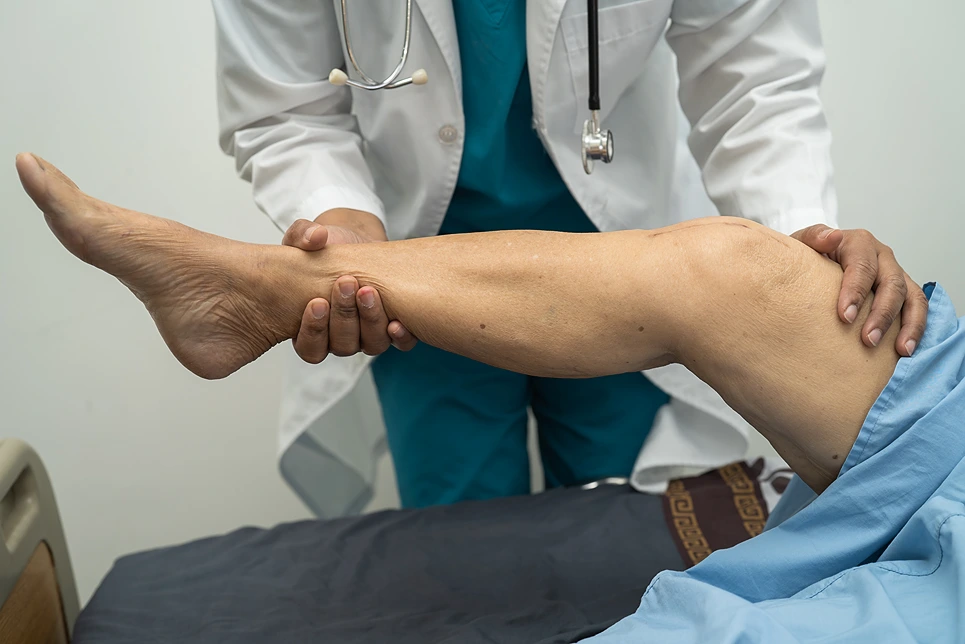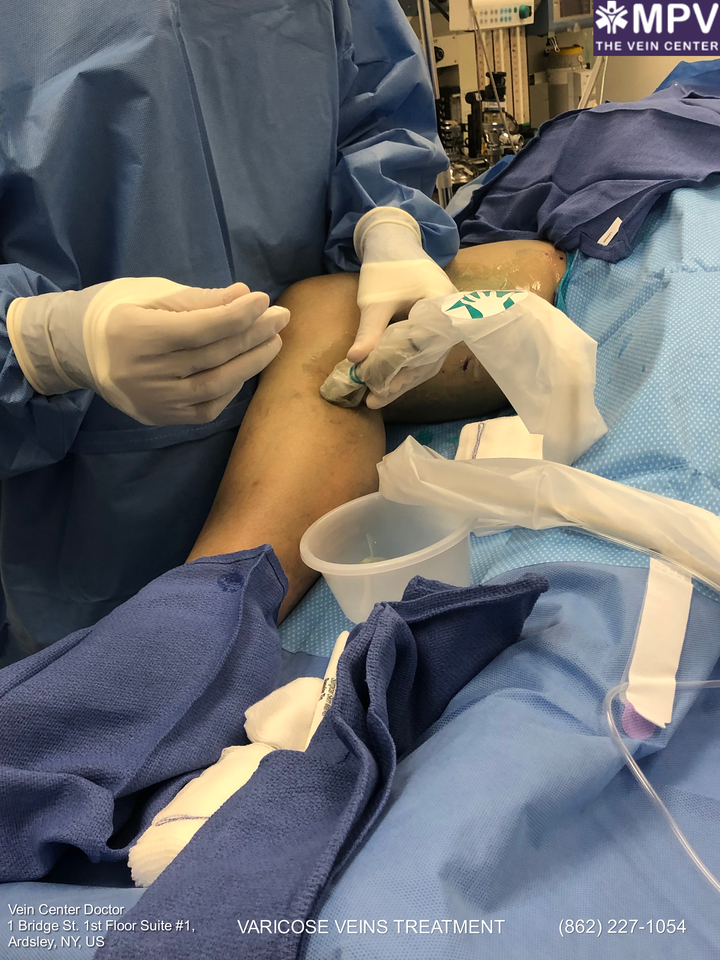Varicose veins are a common type of venous disease that manifests through an unsightly enlarged or twisted appearance of the veins in the lower legs. They’re usually a harmless condition, but getting varicose vein treatment can help ease their uncomfortable symptoms and improve your vascular health. If you’re looking for a safe and minimally invasive vein removal procedure, VenaSeal Closure System is one of your best options.
So when did the FDA approve VenaSeal for treating chronic venous insufficiency and varicose veins? The US Food and Drug Administration cleared VenaSeal for the treatment of symptomatic superficial varicose veins in 2015. It’s a nonsurgical closure system that uses a strong adhesive agent to permanently seal the damaged vein and redirect blood circulation to nearby healthy veins.
Living with unwanted veins is a thing of the past, when you can simply schedule a free consultation with Vein Center Doctor and find your ideal solution today.
Varicose and spider veins are venous disorders caused by faulty or damaged vein valves that fail to push blood back up to the heart. This results in the pooling of blood within your vessels, causing the vein walls to weaken and stretch which forms the appearance of varicose veins in your legs.
In some people, this vein disease is usually asymptomatic. But there are cases when untreated varicose veins can cause noticeable problems like leg pain, swelling, fatigue, muscle cramps, itching, and skin discoloration around the affected vein. To help manage the symptoms of varicose veins, patients can get the VenaSeal treatment.
VenaSeal is a vein closure system developed by Sapheon and manufactured by Covidien LLC in 2014. It underwent several clinical trials before receiving official FDA approval on February 20, 2015. The regulatory agency has identified VenaSeal Closure System as a class III medical device, which describes products that carry a high risk to patients and must therefore be approved before being released to the market.
The FDA approval was granted after reviewing 3 studies that assessed the safety and efficacy of the closure system for saphenous vein reflux. In one of the studies, the VeClose trial, researchers aimed to compare VenaSeal to radiofrequency endovenous ablation treatment and prove its noninferiority to the procedure.
Among the 242 patients enrolled in the study, 108 individuals were randomly chosen to receive the VenaSeal treatment and 114 were subjected to radiofrequency ablation. The reports showed positive outcomes for the VenaSeal treatment, with more than 98% of patients achieving complete vein closure at 3 months compared to 95% of patients who received RFA.
The VenaSeal Closure System is a medical adhesive device that’s made of specially-formulated cyanoacrylate which is a type of medical-grade superglue. It comes in a single-patient kit that contains a catheter, guidewire, syringes, and dispenser gun and tips.
The vein closure is typically done in an outpatient procedure. During the treatment session, the provider will insert the catheter into the diseased vein, and using ultrasound guidance, they’ll deliver a small amount of VenaSeal adhesive to close the great saphenous vein. When the glue is injected, it turns into solid material to permanently seal the affected vein and cause blood flow to reroute to healthier veins.
Based on the studies sponsored by VenaSeal’s manufacturer, vein treatment has a high success rate and patient satisfaction rating. Here’s an overview of the results from the clinical trials that provide strong proof of the treatment’s efficacy for alleviating varicose veins:
| Study | Results |
| VenaSeal Closure System vs. Radiofrequency Ablation for Incompetent Great Saphenous Vein (VeClose) | About 98.9% of patients achieved vein closure at 6 months post-procedure and 95.3% of individuals maintained venous closure for 2 years. No serious adverse events or complications were also reported during the study. |
| European Sapheon Closure System Observational Perspective Study (eSCOPE) | Patients achieved 94.3% closure rates at 6 months and 92.9% closure effectiveness at 12 months after receiving the VenaSeal system. |
| VenaSeal Closure System Extension Study | Patients were evaluated 5 years after treatment and recorded 75% improvement scores with 94.6% long-term closure success. Nine out of 10 patients also share that they’d likely try the procedure again for recurring varicose veins. |
| Post-Market Evaluation of VenaSeal Closure System (WAVES Study) | Patients achieved 98% successful closure of the great saphenous vein within 1 year of treatment and experienced improved quality of life with reduced need for adjunctive therapy |

VenaSeal procedures should be done only by a vein specialist to guarantee the safety and efficacy of the treatment. Before receiving the treatment, you’ll need to schedule a consultation with your provider to assess your varicose veins and discuss your treatment plan. Here are the things you can expect before, during, and after the procedure:
There are several pre-treatment guidelines that you have to follow to ensure the success of the VenaSeal closure system. Here’s an overview of the pre-treatment instructions:
Here’s what happens during the VenaSeal treatment session:
Since it’s not cosmetic surgery, VenaSeal doesn’t require a long downtime period. There are also very minimal side effects with low risks of developing a blood clot or other complications after the procedure. Here’s an overview of what to expect after the treatment:
Aside from VenaSeal, there are other minimally invasive treatments that can help with vein removal. Your vein doctor will help decide which procedure is right for you depending on the severity of your chronic venous insufficiency symptoms. Here’s how VenaSeal compares to other vein removal treatments:
| Description | Side effects | Results | |
| VenaSeal System | A medical adhesive glue that’s injected into the diseased vein to provide permanent vein closure | Minimal side effects and low risks for blood clots and deep vein thrombosis | Visible improvements on varicose veins can be seen within 4 weeks of the procedure and vein closure for several years |
| Ultrasound guided sclerotherapy | An injection therapy that involves the administration of a foam or chemical agent that causes the damaged veins to close | May cause side effects such as bruising, inflammation, skin discoloration, and aching around the treated area | Results on small varicose veins may be visible within weeks, while larger varicose veins normally improves within 3 to 4 months |
| Endovenous laser ablation | An ultrasound guided ablation therapy that uses laser technology to close the damaged vein | May cause bruising, bleeding, pain, swelling, redness, and blood clots | Results may be seen within 2 to 3 weeks after treatment |
| Radiofrequency endovenous ablation | This vein ablation treatment uses radiofrequency energy to cauterize and seal the affected vein | May cause skin burns, small blood clots, bruising, swelling, and pain in the treated area | Results may show within 2 weeks of treatment and last for months to years |
| Ambulatory phlebectomy | A surgical procedure that involves the removal of superficial varicose veins through small incisions in the skin | May cause bleeding, numbness, swelling, pain, and post-treatment infection | Results may show immediately after the vascular surgery since it completely removes the abnormal veins |

The approval of VenaSeal System in 2015 introduced a revolutionary, nonsurgical way of removing varicose veins and helping individuals to reclaim their quality of life. To date, many patients have received the treatment and enjoyed long-term relief from the symptoms of varicose veins.
The Vein Center Doctor is a state-of-the-art vein clinic that offers safe and effective VenaSeal procedures. Our highly skilled team can provide you with customized treatments to ensure that you get the best possible outcomes for varicose vein removal. Call us today to book your consultation or to inquire about our other services.
Find exactly what you need to get rid of your vein-related problems. Dr. Sood and the rest of our team at Vein Center Doctor are ready to help: schedule your free consultation today.
Most Insurance is accepted for treatment